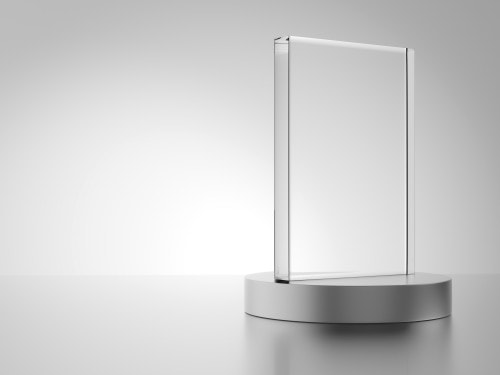If your project demands high performance material, you may have more options than you think. Quartz, Fused Quartz and Fused Silica are all part of an extremely pure family of materials with high working and melting temperatures and superior optical properties as well as low coefficient of expansion.
While they’re often used interchangeably, the fundamental structures and creation of quartz and fused silica are different. Both are highly specialized, but their particular performances vary.
Quartz
Quartz is a very versatile, naturally occurring substance with good electrical, optical and thermal performance and corrosion resistance. In production, quartz glass or fused quartz is created from grains of natural material that are melted and purified.
Key Traits
- Crafted from naturally occurring crystalline quartz or silica grains
- Amorphous
- Non-crystalline product
- Retains some residual impurities from raw material (affects ultraviolet transparency)
- Low OH content
Fused Silica
Fused Silica is an entirely synthetic material, and is technically the purest glass. It has the highest temperature characteristics of any glass, and it often begins as pure silicon gas. Because of the way fused silica is made, it has superior ultraviolet performance to natural quartz and is ideal for applications such as UV transmitting optics.
Key Traits
- Crafted from silicon gas or silica sand (non-crystalline)
- Amorphous
- Cross-linked, 3D structure
- Significant transparency into deep ultraviolet
- Retains some residual impurities from water vapor in processing (affects infrared transparency)
High Performance Materials at Swift Glass
Both of these materials are ideal for semiconductor fabrication, technical and laboratory equipment. Distinctive features they share include:
- Extremely low coefficient of expansion (very shock resistant)
- Extremely high temperature resistance
- Exceptional optical transmission
The Swift Glass Team specializes in custom work, and we’re proud to maintain a vast material inventory. Having a wide range of choices makes it easy to find the perfect glass for your next project, but it also requires careful consideration and attention to subtle qualities.
Remember to evaluate the key traits you need, even once you’ve narrowed your search to a high-performance material:
- Thickness
- Normal Service Temperatures
- Extreme Service Temperatures
- Maximum Temperature, Thermal Shock
- Maximum Temperature, Thermal Gradient
- In/In/F Coefficient of Thermal Expansion
We stock a range of quartz and fused silica glasses from different manufacturers, each with its own particular strengths. Check our online resources and eBooks to learn more, or call the team for more insight — we’ll find just the right glass for your next project.
Tags: fused quartz, fused silica, fused silica properties, quartz, quartz properties




2 Comments
Heather Moore
I’m looking for 4mm and 5mm fused quartz/silica rod for transmission in UV wavelength. Is this something your company offers?
Sheila Reynolds
Heather,
Please contact Helen in our customer service department at 1.800.53.SWIFT. She will gladly help you.